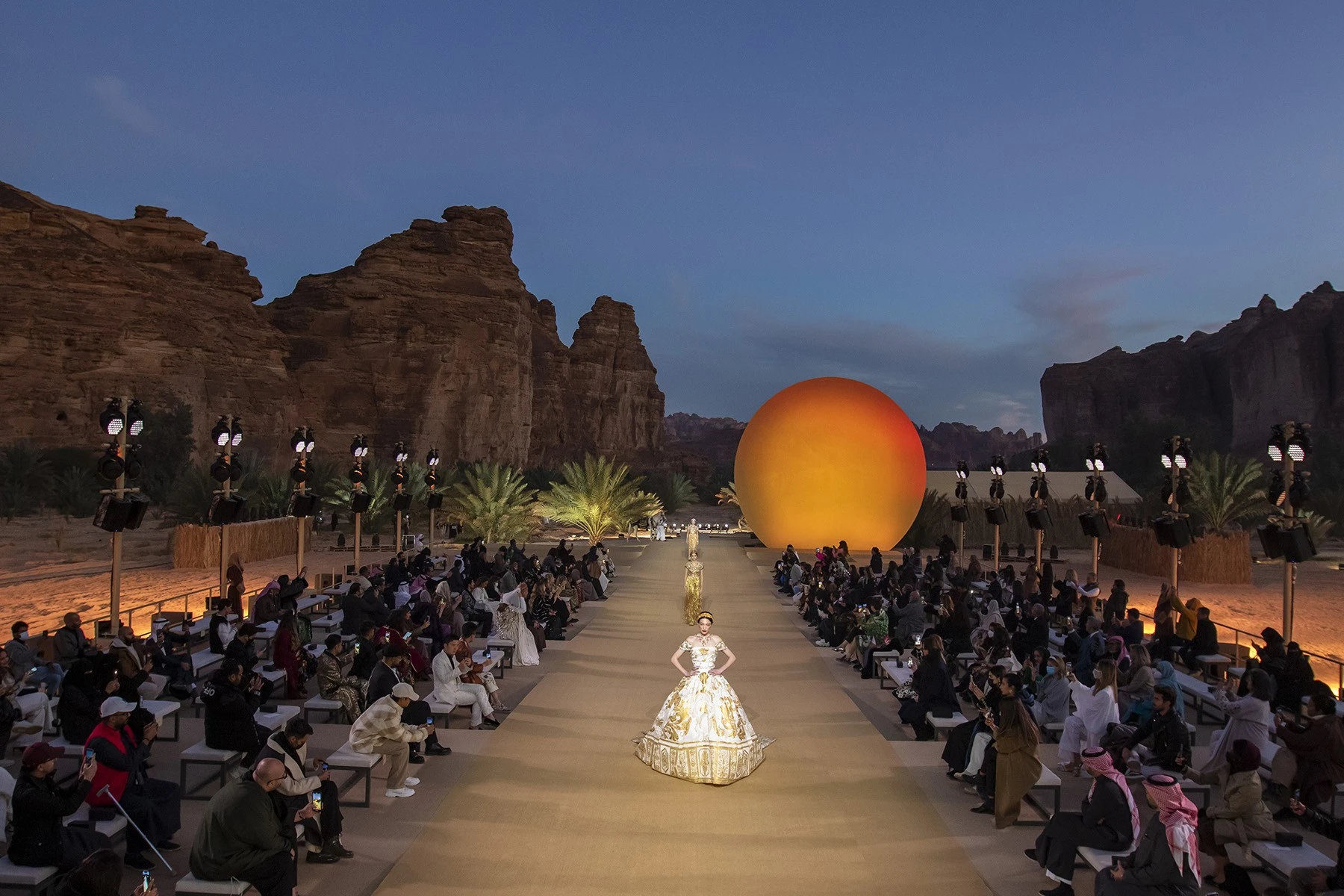Amid a global dip in luxury sales, the Middle East continues to shine as a resilient market for the high-end fashion industry. Thanks to robust tourism and significant local wealth, the region has defied the downturn facing other global markets, with some luxury brands reporting double-digit growth across Gulf countries.
In 2023, luxury sales in the Gulf rose by 6% to $12.8 billion, outperforming the global luxury market, which saw a 2% decline, according to retail consultancy Chalhoub Group. The increase reflects a strong appetite in the Middle East for premium fashion, jewelry, and beauty products categories that continue to drive demand despite global economic uncertainty.
Tourist Spending Fuels the Luxury Market
A key driver of this performance is the region’s thriving tourism industry. Bain & Company, a top consulting firm, estimates that 50–60% of luxury sales in the Middle East are driven by tourist spending. Visitors from Russia and Asia, including wealthy elites and high-net-worth individuals, are contributing heavily to the region’s luxury boom.
Regional Tensions Add Short-Term Risks
Despite strong fundamentals, geopolitical instability continues to pose risks. The air war between Israel and Iran in June prompted airlines to cancel and reroute flights. While those disruptions are now easing, the recent unrest highlights the volatility that can impact tourism and, by extension, luxury spending.
Short-term volatility has increased in the last few weeks and may continue, depending on how the situation develops. At this point, we have not adjusted our long-term growth forecast, as we continue to see considerable potential in the region.
Federica Lovato, senior partner at Bain
High-End Brands Expand Footprint in the Gulf
Luxury fashion houses are doubling down on their Middle Eastern presence. Brands such as Dior, Saint Laurent, and Valentino have opened new stores in Bahrain, while Prada reported a 26% year-on-year increase in first-quarter regional sales. Hermès also saw 14% growth over the same period.
Retailers are investing in immersive experiences to cater to affluent clientele. Zegna showcased its spring menswear collection in Dubai’s opera house, transforming it into an Italian-style villa for a catwalk event. Louis Vuitton hosted a dawn meal in the Dubai desert, and Chanel welcomed elite guests in Abu Dhabi for a high jewelry dinner. Meanwhile, Elie Saab marked its 45th anniversary with a grand show in Riyadh, featuring a live performance by Celine Dion.
Travel Retail Players Stay Optimistic
Travel retail companies are also expanding. Gebr. Heinemann, co-led by Max Heinemann, recently entered the Saudi Arabian market, operating luxury fashion outlets in Jeddah airports. Despite regional tensions, Heinemann remains bullish.
Luxury travel agencies, like Global Travel Moments, noted that while there’s currently “more caution” among travelers booking trips to the broader Middle East, long-term travel volumes have so far remained steady.
Middle East: A Strategic Gateway for Global Luxury
The Middle East also serves as a critical gateway to India, where high tariffs have slowed luxury expansion. With brands like LVMH facing challenges in opening stores directly in India, Gulf cities are becoming key hubs to reach Indian high-net-worth shoppers.
As global luxury markets brace for continued headwinds in 2024, the Middle East stands out as a rare growth engine. Strong tourism, strategic geography, and an appetite for opulence are propelling the region’s high-end fashion scene into a new era, one where Dubai, Riyadh, and Bahrain are becoming just as influential as Paris, Milan, and New York.
